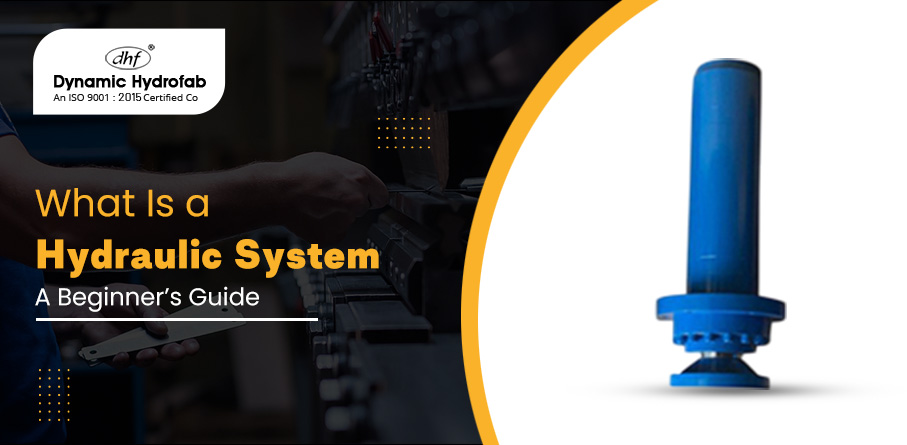- 195-B, Libaspur Road Samaypur, Delhi-110042

The popularity of hydraulic systems is largely due to their high efficiency, reliability, and relatively simple design. Understanding how hydraulic technology works across different industries can help you understand what is hydraulic technology.
So before moving on, let's understand what is hydraulic system. A hydraulic system is any device rendering a small force to a big force by some liquid for the transmission of energy. The design of the hydraulic system is standardized, which is nice because when you have to replace or fix parts, you don’t have to come up with a new design each time. The hydraulic equipment device includes the following elements:
Important components where the main energy conversion occurs are the working cylinder, hydraulic motor, and hydraulic throttle. This is because the cylinder can work in one or two ways, as oil flows in one or two directions. Accumulators within a hydraulic system help to maintain the pressure so that the system continues to operate correctly, compensating for fluid loss and demand variations. But what is accumulator in hydraulic system? It is a vital device for storing energy and flattening out pressure fluctuations to maintain system stability.
Complex machines sometimes have a hydraulic motor instead of a cylinder. Thanks to it, the oil first comes from the pump, then goes back through the pipelines, and the rest is drained into the storage tank.
In a hydraulic system, the hydraulic throttle regulates the liquid supply's speed, which in turn controls the engine's cylinder's movement speed. The type and brand of oil used, as well as the surrounding temperature, can affect throttles. Low-viscosity oils with jet holes between 2 and 2.5 mm are used for temperatures above 30°C. Jets with holes of at least 3.5 mm are installed in colder climates to account for the lower temperatures.
Dynamic Hydrofab offers throttles and other components that are designed to operate optimally under various conditions.
Hydraulic distributors control the flow of liquid from the pump to the hydraulic cylinder cavity and return the excess liquid to the tank. These distributors come with one, two, or three spools and are available in two or three-position versions. The device is called as per its name because the lever of a two-position valve changes to a single position to open the cylinder. Spool-type hydraulic system distributors are used extensively because they are small in size, simple, dependable, and easy to use.
Servo-driven and proportional units are categorized into different flow-controlling units like stop-start and intensity. The liquid pressure inside the cylinders is balanced by a safety valve, which can be either direct or differential action. It compresses and expands the spring to regulate pressure, the spring stroke being adjusted by a screw. An arrow shows the direct-acting safety valve, while the adjacent valve is differential. It uses two pressure stages that allow the frequency of valve operation to be reduced.
This element makes it possible to convert mechanical energy to liquid pressure. This group of elements is available in many types for different operating conditions. For example, dynamic pumps are designed for harsh operating conditions of complex machines and mechanisms and those with reduced noise levels.
It may contain parts such as filters, union nuts, chargers, fasteners, pressure gauges, oil coolers, etc.
Conclusion
Finally, hydraulic systems are vital to many different industries for their efficiency, reliability, and versatility. It is important to understand the key components of the system, from the cylinders, valves, throttles, and pumps, to know how this system converts energy and controls the flow of fluid. Dynamic Hydrofab’s advanced technology ensures performance under diverse applications.
Leave a Comments